스텝 모터, 28BYJ-48#
Specification#
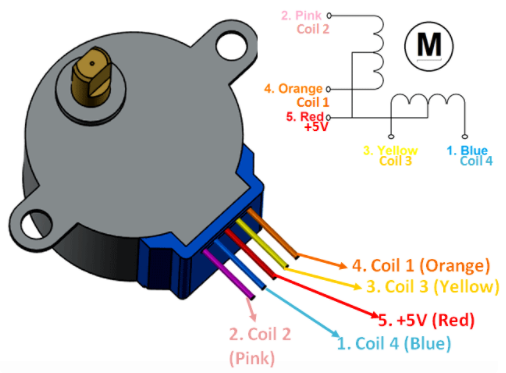
정격전압: 5VDC
기어비: 1/64
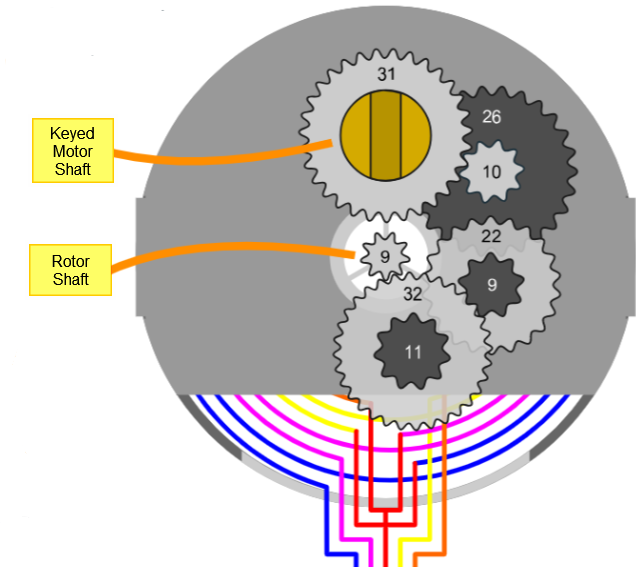
- 스트라이드 각도
- 스펙상 5.625º / 64 = 0.087890625
- 그러므로, 360º / 0.087890625 = 4096 스텝
- 실제로는 11.25º / 64 = 0.17578125
- 그러므로, 360º / 0.17578125 = 2048 스텝으로 1회전
- 스펙상 5.625º / 64 = 0.087890625
- Frequency: 100Hz
- 토크: 34.3mN,m
모터드라이브 ULN2003#
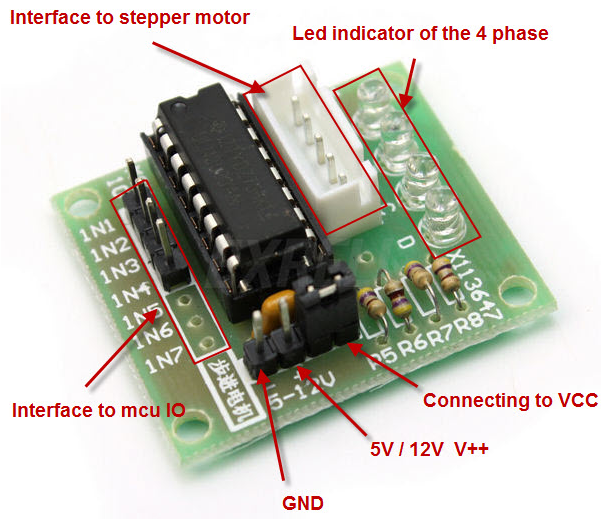
스텝 모터의 구동#
schematic#
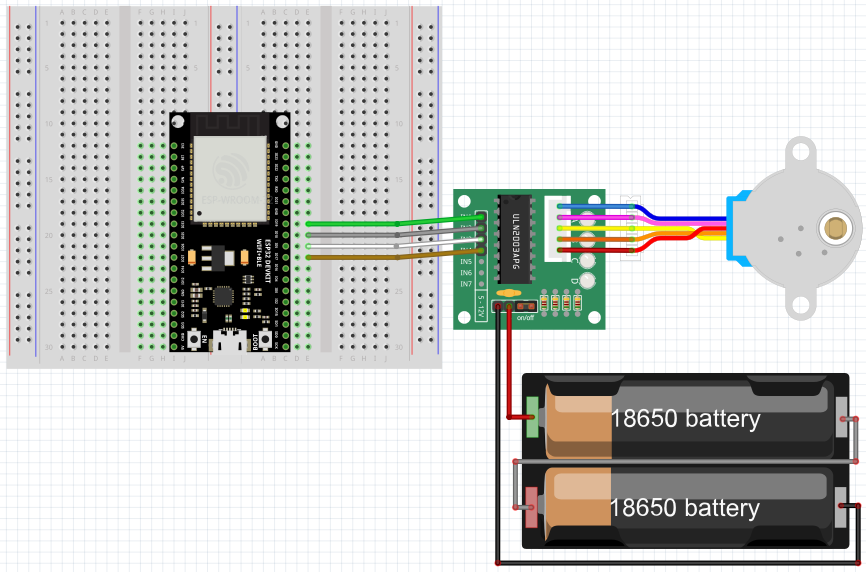
Pin Map#
| 외부전원 | 모터드라이브 | ESP32 |
|---|---|---|
| INT1 | 19 | |
| INT2 | 18 | |
| INT3 | 5 | |
| INT4 | 17 | |
| (+) 5V | GND | |
| (-) | VCC |
※ 모터드라이브에 연결하는 전원(VCC)는 외부전원 5V를 사용한다. (ESP32의 5V는, 전류가 부족하여 ESP32와 연결한 노트북에 영향을 줄 수 있으므로, 사용하지 않는 것이 좋다.)
스텝업 모듈#
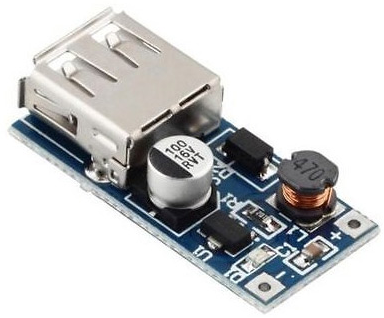
- 입력전압: 0.9~5V
- 출력전압: 5V
- 출력전류: 500~600mA
- 최대효율: 96%
sketch#
#include <Stepper.h>
const int stepsPerRevolution = 2048; // change this to fit the number of steps per revolution
// ULN2003 Motor Driver Pins
#define IN1 19
#define IN2 18
#define IN3 5
#define IN4 17
// initialize the stepper library
Stepper myStepper(stepsPerRevolution, IN1, IN3, IN2, IN4);
void setup() {
// set the speed at 5 rpm
myStepper.setSpeed(5);
// initialize the serial port
Serial.begin(115200);
}
void loop() {
// step one revolution in one direction:
Serial.println("clockwise");
myStepper.step(stepsPerRevolution);
delay(1000);
// step one revolution in the other direction:
Serial.println("counterclockwise");
myStepper.step(-stepsPerRevolution);
delay(1000);
}setSpeed(5);
외부 전원의 전력에 따라 최대값이 달라짐.
5V 전원 사용시 16이 최대값인 경우가 있었고. 그 이상은 안정적으로 회전이 안되며, 17을 넣으면 한바퀴 돌고 정지. 18을 넣으면 돌지 않음.
7.4V 전원 사용시 22가 최대값인 경우가 있었고, 그 이상은 안정적으로 회전이 안됨. (23을 넣으면 시계방향 회전 후, 반시계방향 회전이 안됨. 24를 넣으면 돌지 않음)
전압에 따라 수치가 고정된 것은 아닌 듯 하며, 외부 전원의 상태에 따라 달라질 수 있으므로 테스트가 필요함.